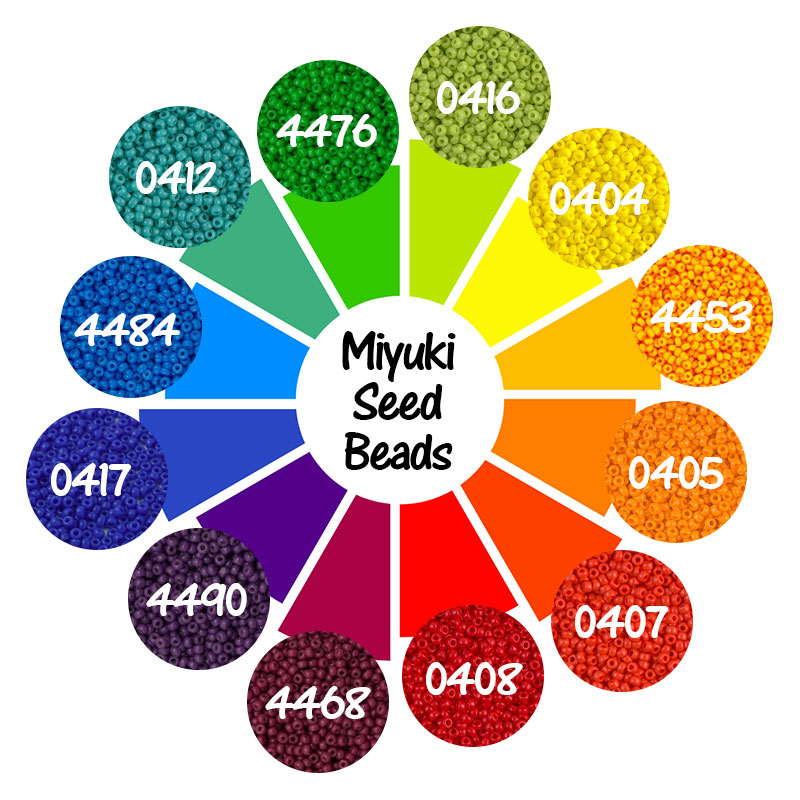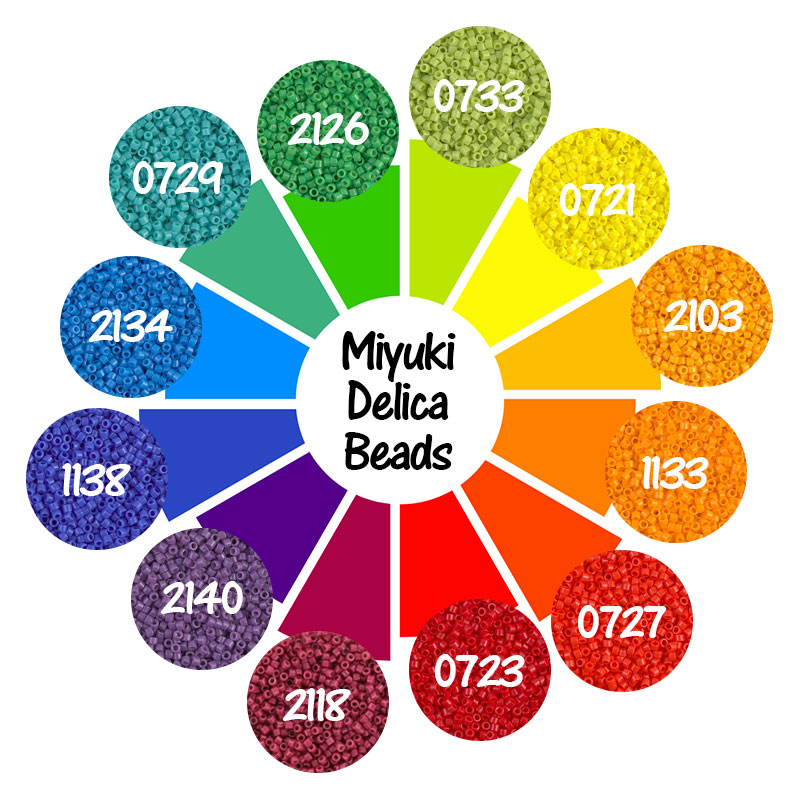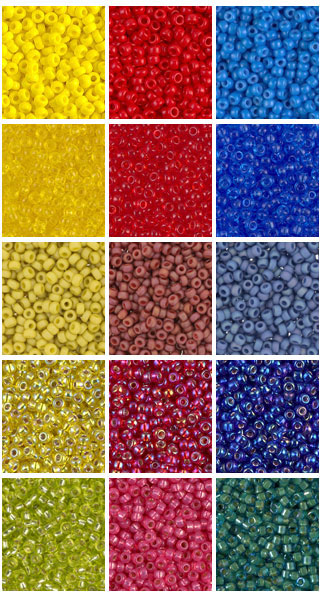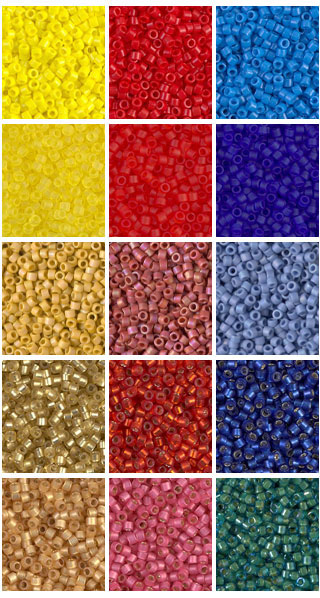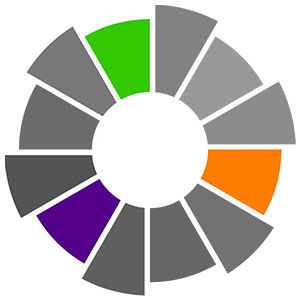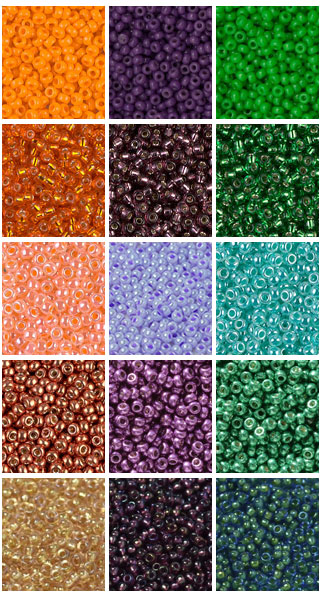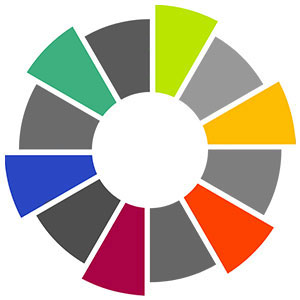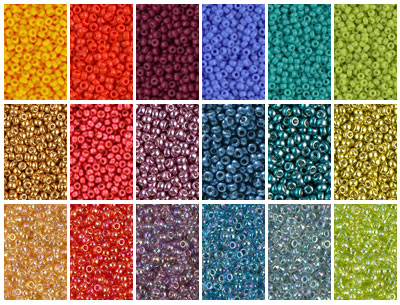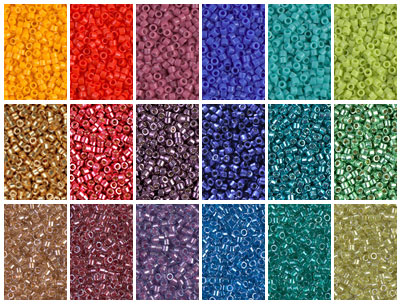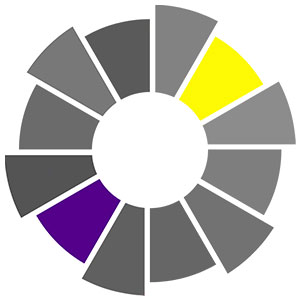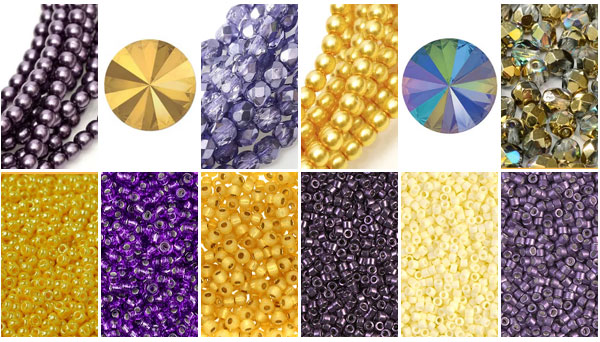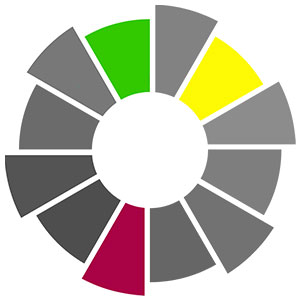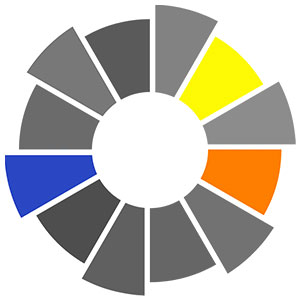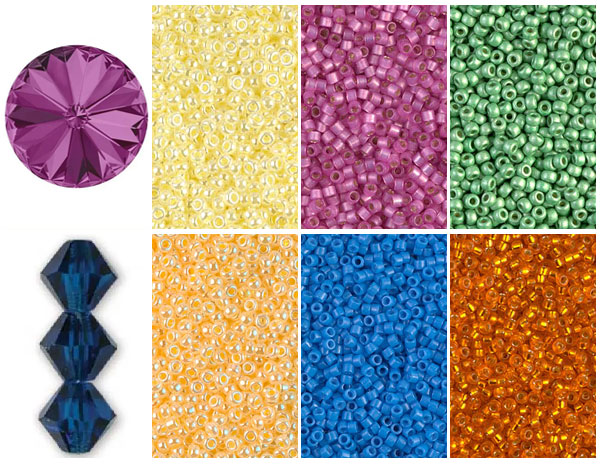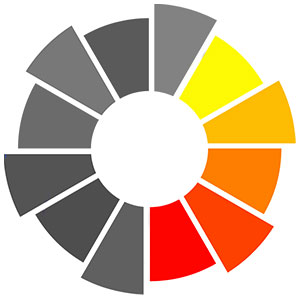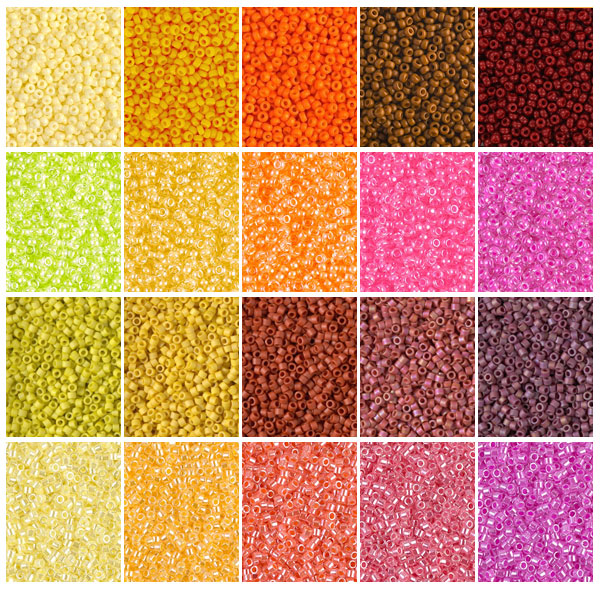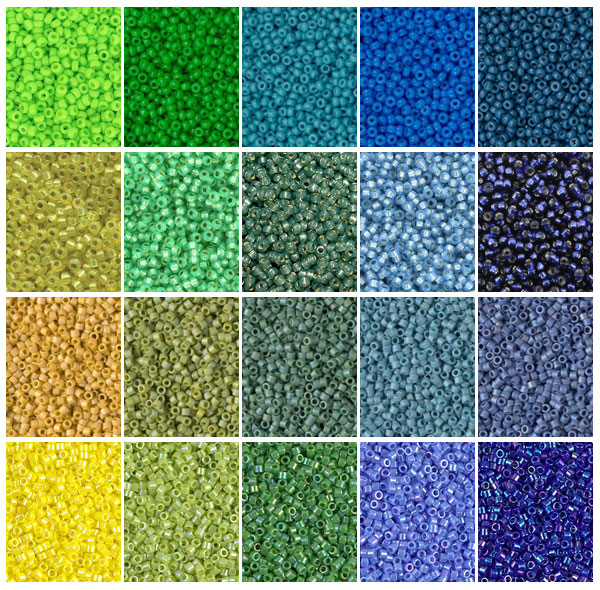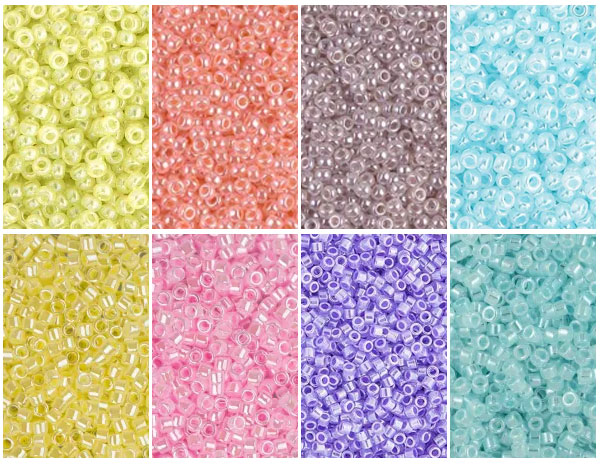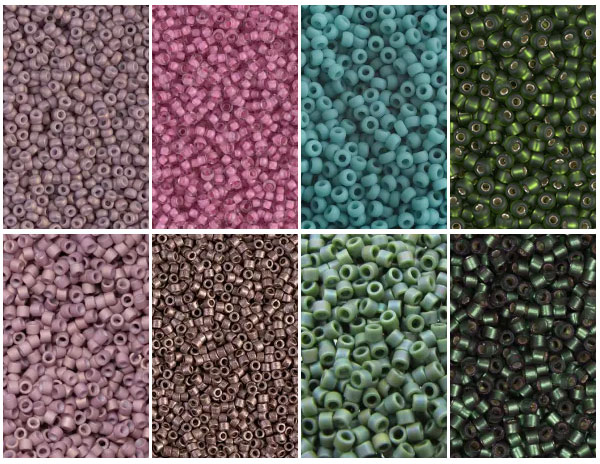?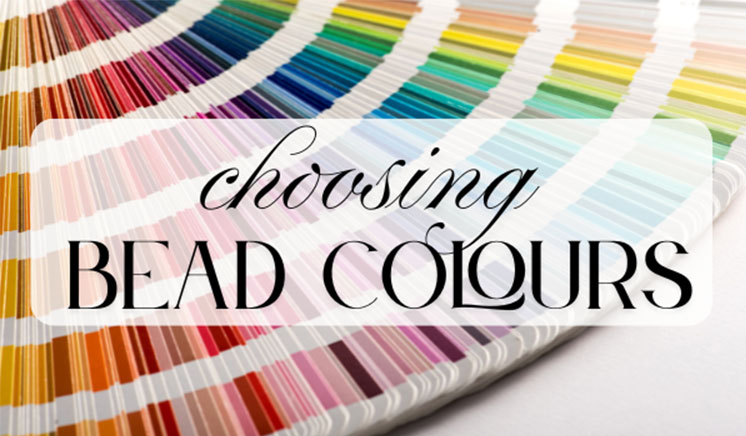

Welcome to the first in our new series of blogs, especially created for Mayuki 2025. In this series, we’ll be looking at one of the most difficult aspects of beading that many of our customers encounter when deciding on a new project - what bead colour palette will they choose? As Miyuki has a huge range of colours and finishes to pick from across both their seed bead and delica bead range, it can be a challenge deciding on the right colours to go with. We hope our colour based blogs goes some way in helping you make informed decisions that produce the results you imagine.
Typically many of customers say they always end up picking the same colours they always use, or want to try something new but old favourites inevitably creep back in. Many of us have to stick to a budget and don’t want to spend money on beads that end up not being used as they weren’t quite right. Sometimes it’s just the comfort of knowing that a trusted bead colour palette works that stops us from experimenting.
Our first blog takes a high level look at basic colour theory, to help you understand why some colours just work together and which colours could give your project that extra something that you didn’t know it needed.
For the purposes of this blog, we’ve created a simplified version of a colour wheel and matched some Miyuki opaque seed and delica beads to the colours (colour numbers shown on diagrams), however it is important to note that the bead colours we’ve chosen are subjective and open to personal interpretation. Therefore we’d encourage you to use it as a guide but not be afraid to stray from the path if you feel a colour or finish works better for you. Likewise, some of the colours shown in our example palettes below may not match the colours shown on the wheel exactly, but they follow the basic rules of colour theory to help create a harmonious colour palette.
|
|
| Miyuki Seed Beads - 12 basic colours | Miyuki Delica Beads - 12 basic colours |
Let's take a look at how our simple colour wheel can start to inspire your colour palettes:
| Primary colours The 3 primary colours are yellow, red, and blue. These are the foundation for all other colours and cannot be made by mixing other colours together. Bead colour palettes using these three colours can be striking and bold. Below, you can see how the changes in the bead finishes can completely alter the feel of the colour palette, even though they are all based on the yellow, red and blue colours. |
|
|
Seed Bead colours (from top to bottom, L-R): 0404, 0408, 4484 0136, 0140, 0150 4692, 4695, 4704 1006, 1010, 1019 4236, 4239, 4242 | Delica Bead colours (from top to bottom, L-R): 0721, 0723, 2134 0743, 0745, 0748 2302, 2306, 2318 0687, 0683, 0693 2171, 2175, 2176 |
| Secondary colours Secondary colours are made from mixing two primary colours. They are green (yellow mixed with blue), orange (red mixed with yellow), and purple (red mixed with purple). Again, changes in the bead finishes alter how the palette feels, with some oranges looking more muted and peachy, or some greens having more of a teal hint. However the colours all still work harmoniously together. |
|
|
Seed Bead colours (from top to bottom, L-R): 0405, 4490, 4476 0008, 0013, 0016 0539, 0534, 0536 4207, 5108, 5106 3521, 3749, 3743 | Delica Bead colours (from top to bottom, L-R): 1133, 2140, 2126 0054, 0056, 0060 0781, 0783, 0786 1837, 2508, 2506 2373, 2390, 2381 |
| Tertiary colours There are 6 tertiary colours that are created by mixing a primary colour with a nearby secondary colour creating yellow-green, yellow-orange, red-orange, red-purple, blue-purple and blue-green. |
|
|
Seed Bead colours (from top to bottom, L-R): 4453, 0407, 4468, 0417, 0412, 0416 4203, 4211, 4218, 5116, 4217, 4205 0251, 0254, 0256, 0279, 0263, 0258 | Delica Bead colours (from top to bottom, L-R): 2103, 0727, 2118, 1138, 0729, 0733 0410, 1841, 1850, 2511, 0427, 1844 0901, 0924, 0922, 0920, 0918, 0910 |
Complementary Colours
These are colours that are opposite each other on the colour wheel, such as green and orange or yellow and purple, which create a high-contrast and visually striking effect when used together.
Knowing what colours are opposite each other can help you choose the most effective highlight or accent colour that can help a project of mainly one colour really 'pop'!
For the example below we've mixed and matched Seed beads with Delica beads and a couple of other beads that might be used to make up a project.
|
|
|
Bead types and colours (SB = Seed Beads, DB = Delica Beads) (L-R): Top Row: Eggplant Pearls, Metallic Sunshine Rivoli, Violet Metallic Ice Fire Polished, Sunglow Pearls, Crystal Paradise Shine Rivoli, Crystal Golden Rainbow Bottom row: SB0422D, SB1344, SB4235, DB0455, DB1511, DB1185 |
Split Complementary Colours
A split complementary colour scheme uses a main colour and the two colours on either side of its direct opposite on the colour wheel. This creates a visually balanced and contrasting palette, offering a softer alternative to a full complementary scheme. Think about what colour you'd like as your main element in your project, then try using its split complementary colours as secondary/background/highlight colours.
The first image shows the main colour is red-blue, with the split complementary colours being yellow and green. The second image shows the main colour being blue, with the split complementary colours being yellow and orange.
|
|
|
Bead types and colours (SB = Seed Beads, DB = Delica Beads) (L-R): Top Row: Fuchsia Rivoli, SB0514, DB2174, SB4214F Bottom Row: Capri Blue Crystal Bicones, DB0516, DB2134, SB1625 |
Analogous Colours
These are colours that are next to each other on the colour wheel, like red, orange, and yellow, which create a harmonious and unified look. These colours can be used to help create ombre or blended effects too. Think about what your main project focal is - such as chunky bead or crystal rivoli - and build your colour palette around that colour.
Many of the colours that Miyuki produce in a particular finish can be used in a similar way, to create a blended look. Take a look at the examples below. Some beads may not represent the colour on the colour wheel exactly, but are near to the other colours in that particular bead finish, helping to create a palette that easily morphs into its neighbour colour.
|
|
|
|
Seed and Delica Bead colours (from top to bottom, L-R): SB4451, SB4453, SB4454, SB4458, SB4469 SB1119, SB1121, SB4298, SB4299, SB4302 DB2283, DB2284, DB2306, DB2288, DB2308 DB0232, DB0233, DB0235, DB0236, DB0247 | Seed and Delica Bead colours (from top to bottom, L-R): SB4471, SB4476, SB4478, SB4484, SB4485 SB4236, SB4240, SB4241, SB4242, SB4281 DB2302, DB2309, DB2311, DB2315, DB2317 DB0160, DB0169, DB0163, DB0167, DB0165 |
Tints, Tones and Shades
Our colour wheel is fairly basic, however we all know there are so many other colours to pick from. Having a basic understanding between Tints, Tones and Shades can help with picking not just the colours but why the finish of the beads can change the whole look and feel of a pattern:
Tint - These are colours with white added to them. These create a light, feminine, airy feel and can be recreated using beads with a crystal, pastel, chalk or ceylon finish:
|
Seed and Delica Bead colours (from top to bottom, L-R): SB0514, SB0539, SB0542, SB0522 DB0232, DB0244, DB0249, DB0239 |
Tone - These are colours with grey added to them. These colours give more of a subtle, muted feel and can be replicated using beads with a matte, opaque matte luster or frosted lined finish:
|
Seed and Delica Bead colours (from top to bottom, L-R): SB2034, SB1931, SB0412F, SB0026F DB0244, DB1843F, DB1594, DB0690 |
Shade - These are colours with black added to them. These colours can feel heavy and dramatic and can be replicated using beads with a jet, matte, luster or metallic iris/AB finish as they help bring down the overall colour of the bead:
|
Seed and Delica Bead colours (from top to bottom, L-R): SB1889, SB2068, SB2073, SB1959 DB0372, DB0011, DB0012, DB1003 |
Blacks, Whites and Neutrals
You may have noticed on our colour wheel that we've not included any blacks, whites, greys and neutral colours. In most colour palettes, blacks, whites, greys and neutrals can be added easily as long as the finish of the bead compliments your other chosen colours e.g. matte finishes can help soften a palette, whereas shiny opaque finishes can create a strong, dramatic contrast. We'll be taking a closer look at these colours in a later blog and how they can be used effectively.
We've given you a few pointers that can help to pick a harmonious and beautiful bead colour palette - hopefully now you'll be starting to feel more confident in trying something new!

